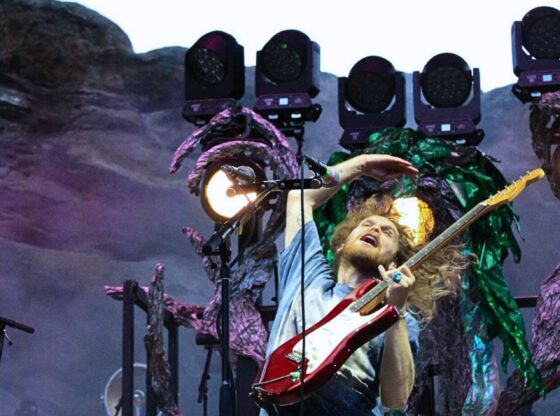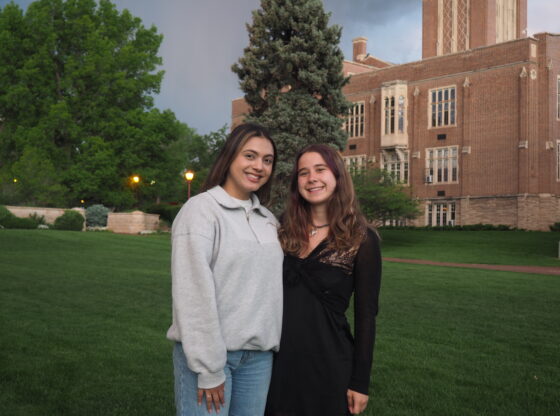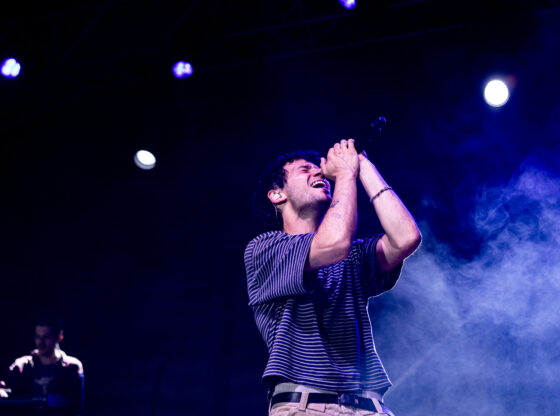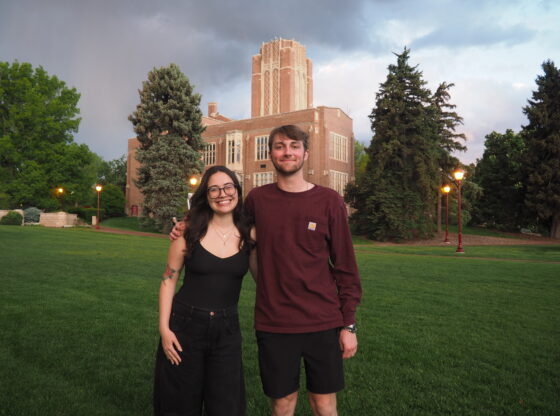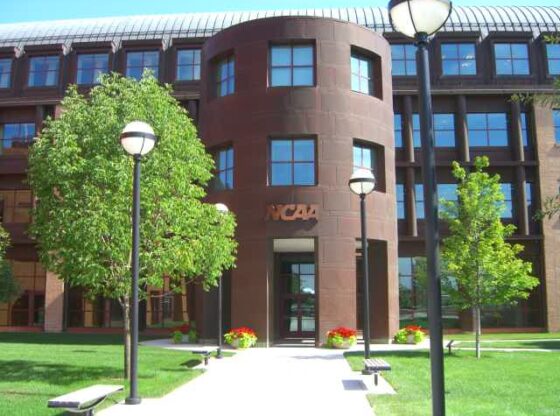 Photo by:
Photo by:
“Where the Wild Things Are,” presented by the Colorado Ballet now through March 10, is a wonderful rendition of the children’s story by Maurice Sendak. The ballet itself is nontraditional and is easily accessible to the average, non-dancing audience member. The cartoon-like costumes, decor (both by Sendak himself) and comical antics make “Where the Wild Things Are” a pleasure to watch for children and adults alike.
The red curtains part to reveal a monstrous face, whose glowing eyes shift from yellow to green and back again. Then the face lifts into the rafters and out pops Max (danced by Zhuang Hua), the rambunctious storybook character dressed in an animal pajama set–complete with a long furry tail. He illuminates the stage with his playful maneuvers, creatively dodging his mother and her vacuum (his mother is played by a male dancer. The boy prances around the stage by himself, including his signature marches and dramatic shrugs.
Max is having a fine time until his oversized aunts and uncles pop onto the stage, bombarding him.
Alone in his bedroom after being punished by his mother, Max continues to prance as his toys come alive in a jazzy dance sequence. The scene slips from a bedroom to a night forest transformation, then a fog machine gives the effect of a misty sea.
A pair of sea monsters acts as one in the scene, drawing upon the visual effects of body shape and flexibility. In addition to the creatures in this scene, where Max is traveling by boat to the island of the Wild Things, an inanimate sea dragon “blows” smoke and ashes from his flaming nostrils.
Max and his teddy bear are in for a surprise when the Wild Things come onto the stage, and so is the audience. The larger-than-life monsters come complete with oversized heads, with their comical features creeping straight from the pages of Sendak’s picture book.
The costumes may be large, but the dancers inside can still handle the fancy footwork. They dance back and forth on the stage, lifting hands and feet in appreciation of their childish visitor. They even name him “King of all the Wild Things”-but not before the creature with the chicken head fits in a few “tours” (ballet turns with one leg extended at a 90 degree angle).
“Where the Wild Things Are” is the childhood time machine for the noncultural viewer in love with fun. Though the traditional ballet, “Sachertorte,” that precedes it may not be for everyone, Sendak’s story certainly is.


